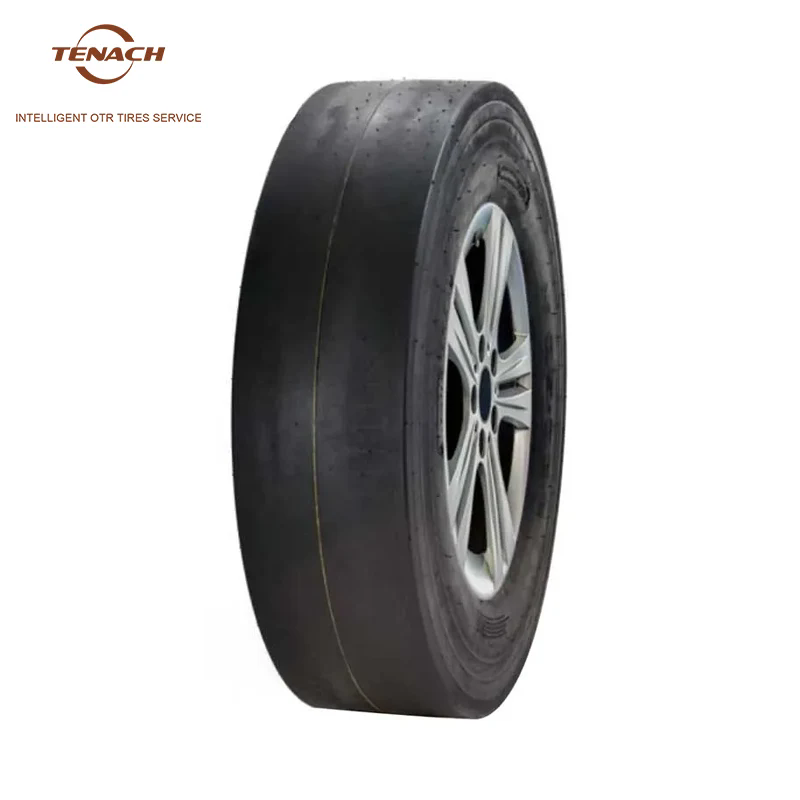Bias OTR Tires: Durable Performance for Off-the-Road Applications
2025-05-14
Bias OTR (Off-The-Road) tires are rugged, heavy-duty tires specifically engineered for use in extreme environments such as construction sites, mining operations, agriculture, and industrial applications. Built with a cross-ply structure, bias OTR tires are known for their toughness, high load capacity, and ability to perform reliably on uneven and harsh terrains.
What Are Bias OTR Tires?
Bias OTR tires are constructed using layers of rubber-coated fabric plies that are placed diagonally across each other at angles, typically between 30 to 40 degrees to the centerline of the tire. This construction method gives the tire a rigid sidewall and tread, allowing for better resistance to cuts, punctures, and impacts. Unlike radial tires, the bias-ply design provides superior strength for short-distance, low-speed operations on challenging surfaces.

Key Features
Strong Sidewall Support: The cross-ply design enhances sidewall strength, making them less susceptible to damage from rocks or debris.
Impact Resistance: Ideal for rough terrain, bias OTR tires can withstand sharp objects and harsh working conditions.
Lower Cost: Generally more affordable than radial tires, making them cost-effective for certain applications.
Good Traction: Aggressive tread patterns provide strong grip and stability on soft or uneven ground.
Heat Tolerance at Low Speeds: Suitable for equipment that operates at slower speeds where heat buildup is minimal.
Common Applications
1. Construction Equipment
Bulldozers, loaders, and graders often use bias OTR tires for their durability on uneven construction sites.
2. Mining Vehicles
Trucks and underground loaders benefit from the tire’s resistance to sharp rocks and heavy loads.
3. Agricultural Machinery
Tractors and harvesters operating in muddy or rocky fields can rely on bias tires for traction and stability.
4. Forestry and Industrial Use
Bias tires are well-suited for operations in remote areas with little to no paved surfaces.
Advantages of Bias OTR Tires
Durability in Harsh Conditions: Withstand punctures and impacts in rocky, muddy, and abrasive environments.
Stability Under Load: Excellent for heavy-duty machines carrying substantial weight at low speeds.
Repairability: Easier and more cost-effective to repair than radial tires in many cases.
Stiffness: Provides strong support, particularly useful when working with heavy attachments or machinery.
Limitations to Consider
Less Comfortable Ride: The stiff construction can lead to a rougher ride compared to radial tires.
Higher Rolling Resistance: Can lead to increased fuel consumption in long-distance applications.
Lower Heat Resistance: Not ideal for high-speed or long-haul applications due to potential heat buildup.
Choosing the Right Bias OTR Tire
When selecting bias OTR tires, consider the following:
Tire Size and Load Rating: Ensure compatibility with the equipment and the intended load capacity.
Tread Pattern: Choose a tread designed for the specific terrain—whether it’s mud, gravel, rock, or mixed conditions.
Ply Rating: Indicates the strength of the tire; higher ply ratings are suitable for heavier loads and tougher terrain.
Application Type: Use bias tires where speed is not a priority, and durability is crucial.
Conclusion
Bias OTR tires are a trusted choice for heavy machinery operating in aggressive, off-road environments. Their robust build, affordable cost, and dependable performance make them indispensable in industries like construction, mining, and agriculture. While they may not match radial tires in speed or comfort, bias OTR tires deliver unbeatable strength and reliability where it matters most—on the jobsite.


